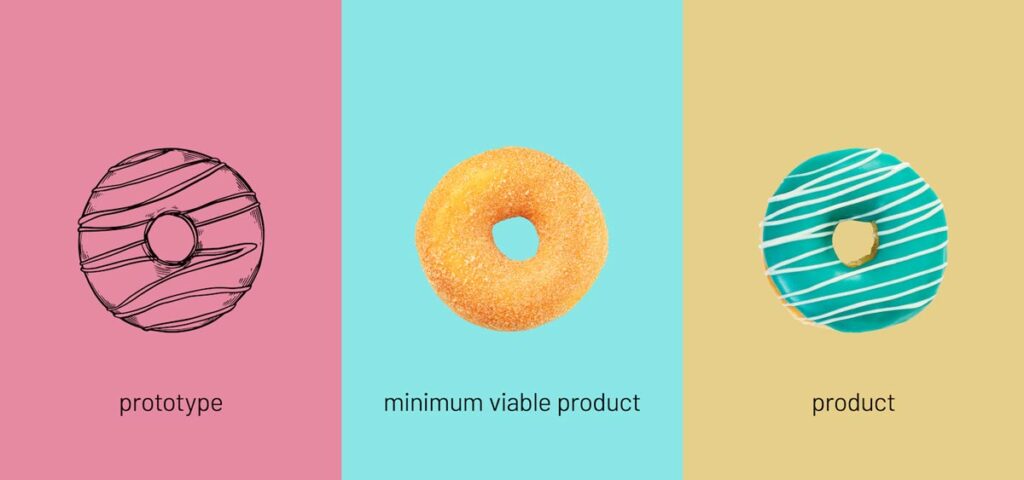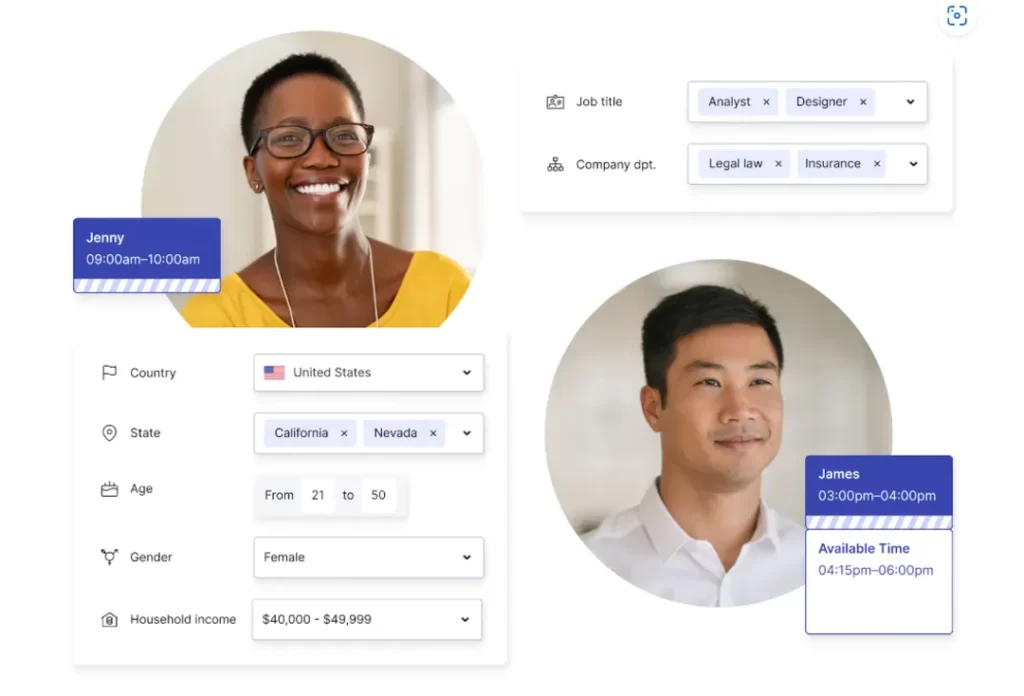12 Tips for Designing Conversational Interfaces
Conversational interfaces that allow humans to interact with systems using natural language are becoming increasingly popular. Rather than requiring users to adapt to rigid, menu-driven interfaces, conversational UIs aim to adapt to the person using more natural interactions. Designing engaging, pleasant, and productive conversational experiences presents unique challenges that require thoughtful solutions. This comprehensive guide will share tips for crafting more intuitive, efficient, and human-centric conversational interfaces.
Table of Contents
Focus First on Solving Real Problems for Real People

When kicking off a conversational interface project, it's crucial not to get distracted upfront by the latest trends or “cool” capabilities. The first and foremost consideration should be understanding human needs and designing intentionally to solve real problems. Focusing on the end-user experience beyond the technology is crucial in creating systems with staying power.
- Spend time researching and analysing your target users—their goals, frustrations, how they currently solve problems your system aims to address, the terminology they use, etc.
- Map out actual user workflows and journeys, highlighting pain points and opportunities early conversational interfaces can tackle.
- Involve a diverse set of target users early and often with interviews, proto-personas, usability testing, feedback incorporation, and more.
Centring real human needs over technological capability helps ensure you build conversational interfaces offering actual value—not just novelty.
Ensure Conversations Flow Naturally
Unlike traditional GUIs, which compartmentalise features and functions into menus, tabs, and buttons, a conversational interface should connect various capabilities into one continuous, natural conversation. This calls for thoughtfully mapping dialogue flows to reflect how people intuitively seek and share information through discussion.
- Analyse honest human conversations addressing goals similar to your system's purpose—how do they naturally flow? What questions lead to what responses?
- Mimic natural conversation patterns in your dialogue flow as much as possible, linking prompts, confirms, responses, and transitions convincingly.
- Test conversation flows continuously with real users during development, tweaking to improve logical flow.
- Build a flexible framework allowing some user control over conversation direction rather than fully preset rigid paths.
Crafting conversational interfaces centred on natural dialogue patterns makes interactions more intuitive and pleasant for end users.
Conversation Design Principles
Here are five fundamental principles for designing flowing, natural-feeling conversational interfaces:
- Contextual: Show awareness of conversation history and don't repeat questions seeking info that has already been provided.
- Intuitive: Follow logical real-world dialogue norms around goal-oriented discussions.
- Flexible: Allow changes in direction within reasonable bounds.
- Helpful: Provide clarifying details, confirms, examples and tips proactively.
- Familiar: Use terminology, phrases, and techniques users know from human interactions.
Perfect the Personality and Brand Tone
Unlike static graphical interfaces, conversational UIs feature a personality, tone, and speaking style delivered via prompts, confirmations, and other textual interactions. This personality affects user perception of your brand or product, so fine-tuning it effectively is crucial.
- Align with the brand: Ensure language word choices, style, tone, etc, are consistent with marketing messaging and personalities.
- Appealing persona: Develop a distinct but appropriate, consistently delivered persona—casual or professional, succinct or descriptive, etc.
- Test personality: Get feedback from users during development on how your system's personality is perceived. Tweak as needed.
- Evolve carefully: Only pivot personalities drastically with good cause, as it risks confusing and alienating existing users.
Use Conversational UI Capabilities Judiciously
The open-ended nature of natural language interactions enables conversational capabilities beyond traditional graphical interfaces. However, just because you can develop cutting-edge functions around AI and NLP doesn't mean you should. Relevancy and real human utility should drive the inclusion of functionality.
- Start simple: Don't shoot for a wildly ambitious system upfront. Begin with a narrowly focused capability delivering straightforward utility before expanding.
- Evaluate real need: Do user workflows and goals require or benefit from each additional capability under consideration? If not, leave it out for now.
- Get feedback: Test new functions early with target users—do they add value? Gather input to refine.
- It's OK to start small: Stay focused, trying to impress with all that's possible. Focus first on solving primary problems effectively.
Stay laser-focused on developing the conversational capabilities that offer the most fundamental value early on.
Design for All Users from the Start

While conversational interfaces can provide more inclusive experiences for users across varying demographics and abilities, some best practices should still be baked into initial designs.
- Offer multiple interaction modes: Provide options for both text and voice input/output right from your initial launch.
- Ensure accessibility: Confirm that the experience works well for screen readers. Test early with users.
- Consider broader literacy ranges: Design for the widest reasonable audience without overly complex language.
- Provide onboarding guidance: Refrain from assuming intuitiveness. Guide new users appropriately.
- Remain flexible: Continue expanding on accessibility and inclusiveness over time per user feedback.
Focus on Data Privacy Protections Early On
For conversational interfaces gathering user data to function, addressing privacy concerns openly and appropriately in initial launch plans is critical—not an afterthought once issues arise.
- Be transparent: Explain to users how their data is gathered and how pre-signup is applied. Ensure continued visibility.
- Limit data gathering: Collect only necessary data to provide core functions. Avoid extraneous tracking and analytics unquestioningly adopted from web/mobile norms.
- Anonymise data: Scrub collected data of personally identifying details not required for functionality.
- Secure access rigorously: Protect servers and databases to avoid exposure by malicious actors.
- Provide reporting control: Allow users to review data gathered and request changes/deletions.
Make reasonable data privacy measures central to the experience from day one for greater user comfort over the long term.
Start with a Minimal Viable Product (MVP)

Resist endless rounds of internal debating, planning, scoped user testing, and delays in searching for perfection before launching. Lean into agility by pushing out an early minimal viable product (MVP) version instead, learning from honest user feedback to rapidly iterate.
- Launch with the minimum features set, delivering core functionality and solving a pressing initial use case.
- Expect an imperfect v1 release—but one good enough to gather user feedback.
- Fix bugs and upgrade capabilities quickly based on actual use data/critiques.
- Add ancillary features over subsequent releases once core functionality performs smoothly.
The sooner you get an MVP in users' hands, the quicker you can evolve it towards an optimal product.
Integrate Smart Error Handling
Despite best efforts, users will inevitably interact in ways your system didn't anticipate, thanks to the inherent flexibility of natural language. Smart error handling that provides helpful guidance gets conversations quickly back on productive tracks.
- Design a tiered fallback strategy with varying responses based on input analysis:
- Address typos/phrasing variants with AI.
- Seek reclarification from the user if unsure.
- Transfer to human reps when truly stuck.
- Provide supportive troubleshooting by suggesting hypothetical queries or common fixes.
- Continue analysing failed exchanges to expand system vocabulary, dialogue branches and error-handling capabilities over time.
Smooth error handling helps conversational interfaces feel more flexible, intelligent and pleasant to interact with over the long term.
Optimise Efficiency of Key Workflows
While conversational interfaces introduce welcome flexibility, commonly used workflows optimise for efficient completion—don't prioritise unstructured dialogue by default across all functions.
- Identify your system's 5-10 most frequent user goals
- Tighten and streamline paths to complete these essential tasks efficiently
- Balance flexibility to change course as needed with speed for familiar routes
- Highlight shortcuts like suggested single utterances triggering one-step processes
- Continue optimising the efficiency of recurring workflows based on usage data
Don't miss the forest for the trees—match conversational open-mindedness with intentional optimisation around quickly completing the most typical interactions.
Facilitate Easy Transition from Other Channels

Integrating innovative transitional touchpoints between your conversational interface and other channels like company websites, apps, and live support facilitates seamless omnichannel experiences.
- Let the conversation start from other channels to initiate natural dialogue for targeted tasks.
- Make suggestions for transition to other media when optimal for user goals
- Maintain context between exchanges across platforms for a coherent, continuous experience
- Avoid dead-ends forcing unsatisfying channel transfers without clear value
- Build channel consistency over time, allowing bidirectional transitions as needed
Bridge gaps between conversational interfaces and other channels to complement strengths, minimise weaknesses and enhance holistic user journeys.
Design Consistent Yet Flexible Architecture
Conversational interfaces involve complex interconnected components – text to speech recognition, NLP, predictive modelling, response templates, third-party APIs and more. Architecting these pieces for maximum cohesion, scalability, and reliability is vital.
- Containerise components for efficient updating/swapping/connecting modules
- Centralise shared data like glossaries, personalised variables, conversation histories, etc.
- Log activity extensively for training improvement and debugging
- Develop modular frameworks allowing mix-and-match integrations
- Plan for exponential growth via cloud infrastructure, load balancing, etc.
Architectural decisions balancing consistent structures and flexible future-proofing amplify success as capabilities and users multiply over time.
Prepare for Ongoing, Rapid Evolution
In contrast with conventional software, expect to update core elements of your conversational interface far faster and more regularly as use exposes areas for optimisation.
- Automate testing and monitoring as much as possible for rapid error surfacing
- Streamline approval workflows for pushing incremental tweaks frequently
- Extend analytics tracking and modelling to uncover issues and refinement opportunities
- Plan for modernisation of legacy elements on 6-12 month cycles.
- Normalising constant learning and enhancement is the key to progress over perfection.
Matching the pace of enhancement to the conversational paradigm's unique pace of advancement keeps innovation on track and pairs with the typical machine learning growth rate.
Conclusion: Focus on Users' Experience
There are many exciting possibilities in play with conversational interfaces today thanks to expansive sets of emerging technologies now coming together. But while these innovations provide robust, flexible building blocks, remember that success comes down to understanding people, solving problems and crafting experiences centred first on humanity–not the magic behind the curtain alone.
Keep users and their objective, felt needs in the driver's seat from start to finish by gathering feedback early and often, testing ideas quickly and focusing relentlessly on enhancing tangible value in daily life. By blending empathy, design thinking, and agility with robust technology, next-generation conversational platforms finally start living up to their long-held promises, moving beyond novelties into preferred solutions and improving lives.
Conversational Interfaces FAQs
What are some differences in designing for voice vs chatbots?
Voice interfaces allow hands-free interactions but limit the use of visual elements. Chatbot experiences focus on graphical displays, menus and buttons, leaving room for typos and slower inputs.
How might design strategy change for long vs. short user conversations?
Shorter quick-task interactions benefit most from concise, accelerated paths to completion. Extended complex goal support calls for a greater focus on intuitive dialogue flow, personas and relationship building.
Why not just focus on perfecting AI accuracy vs. UX design?
It overlooks that intelligence alone can't overcome fundamental shortcomings in experience for those interacting with a system. UX shortfalls lead to confusion, difficulty and abandonment regardless of back-end capabilities.
What are the risks of over-indexing on personality vs. utility?
Too much emphasis on humour, relatability, etc, detracts focus from solving real problems effectively. However, sterile utility without warmth risks seeming robotic and reduces user comfort over time. Balance is key.
How might continuous deployment impact UX paradigms?
Frequent incremental updates based on user data allow more responsiveness to emerging experience issues and personalisation opportunities. However, reliance on constant change challenges conventional UX testing and validation frameworks.
